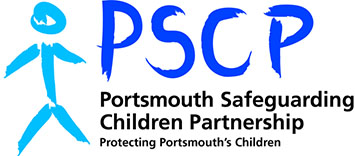Assessment tools
This page is a directory of common tools available for professionals working with families which can support undertaking assessments, measuring risks and developing plans to support children and young people. These resources have been selected to support the work of the PSCP and its policies and procedures (currently available in the online safeguarding children procedures manual)
It should be noted:
- Not all tools are appropriate for all families, individuals or situations.
- Practitioners should use the tools which best support them and the family in appropriately identifying, assessing and responding to their needs.
- Practitioners can and should be creative about how they use these tools to make them appropriate to the individual, circumstance or situation.
At the time of publication the information contained within these documents is correct, but if you notice any discrepancies please contact us at PSCP@portsmouthcc.gov.uk
If you are completing any of these toolkits with a child or parent/carer, then you should consider the following:
- Venue and space: the child or parent/carer that you are working with need to feel comfortable and have a sense of privacy
- Time: you need to allow enough time to complete the tool and to deal with any issues that may emerge
- Resources: make sure that you have a pack of resources available including paper, pens, copies of worksheets etc.
- Comfort: think about anything the family member might need to keep them feeling relaxed and safe. Interruptions such as telephones or people coming in and out, or loud noises that make it hard to concentrate should be avoided
- Clear explanation: ensure that all people participating in the activity understand the process, what they will be expected to think and communicate about, and for what purpose the information will be used
- Confidentiality: it is important that the participant is aware of any issues of confidentiality. Things to consider include; what happens to any information that is shared in the course of the exercise? Is it discussed outside the room? If so, by whom and for what reason? It is important that the participant is made aware of this before starting to complete the toolkit with them
When using the tools please refer to the relevant policy, procedures and guidance
For more information on when and how to use these, please refer to the Children Protection Conferences page on our website
- Agenda for Initial Children Protection Conferences
- Multi-Agency Report Template for Initial Children Protection Conferences
- Agenda for Review Children Protection Conferences
For more information on when and how to use these tools, please refer to the Missing Exploitation, Trafficking and Contextual Safeguarding page on our website
Child Exploitation Risk Assessment Framework (CERAF): For non-health staff – A CERAF should be completed as soon as potential concerns regarding any form of child exploitation are identified
CSERQ4 (Child Sexual Exploitation Risk Questionnaire): For health professionals – This shortened version has been specifically designed for health professionals who have ‘time limited’ contact with children. The tool should be used to quickly identify children at risk of exploitation.
Recommendation Support Tool (RST) – must be completed and submitted along with the Early Help Assessment for contacts made to the Multi-agency Safeguarding Hub (MASH) when a professional feels a child meets the criteria for a S17 Children Act 1989 assessment due to having a disability. The RST is required to help guide and inform the statutory assessment process.
For more information on when and how to use this tool, please refer to the Missing Exploitation, Trafficking and Contextual Safeguarding page on our website
Children who go missing from home or care risk assessment toolkit – should be completed when a child goes missing in order to assess a child or young person’s level of risk in a concise and consistent manner; and to improve professional understanding about the ‘push’ and ‘pull’ factors associated with young people going missing. This toolkit sets out in Part B agencies roles and responsibilities in responding to missing episodes.
For more information on when and how to use this tool, please refer to the Missing Exploitation, Trafficking and Contextual Safeguarding page on our website
Online National Referral Mechanism (NRM) form – Please note though that initial referrals to the NRM must be handled by an authorised agency, referred to as “first responders”.
For more information on when and how to use these tools, please refer to the Domestic Abuse and Sexual Violence page on our website
- Domestic Abuse Pathway
- SafeLives DASH risk checklist – guidance
- DASH form
- Young People’s DASH
- DVA Screening Tool and Pathway for Health Services
For more information on when and how to use these tools, please refer to the Family Support Plan (FSP) page on our website
These tools below can be used to help gain the family’s views.
- About me
- Wizard Tool
- Volcano Scale
- Say it your own way
- Fairy Tool
- Circle of Support
- All about me booklet
For more information on when and how to use these tools, please refer to the Family Safeguarding page on our website
